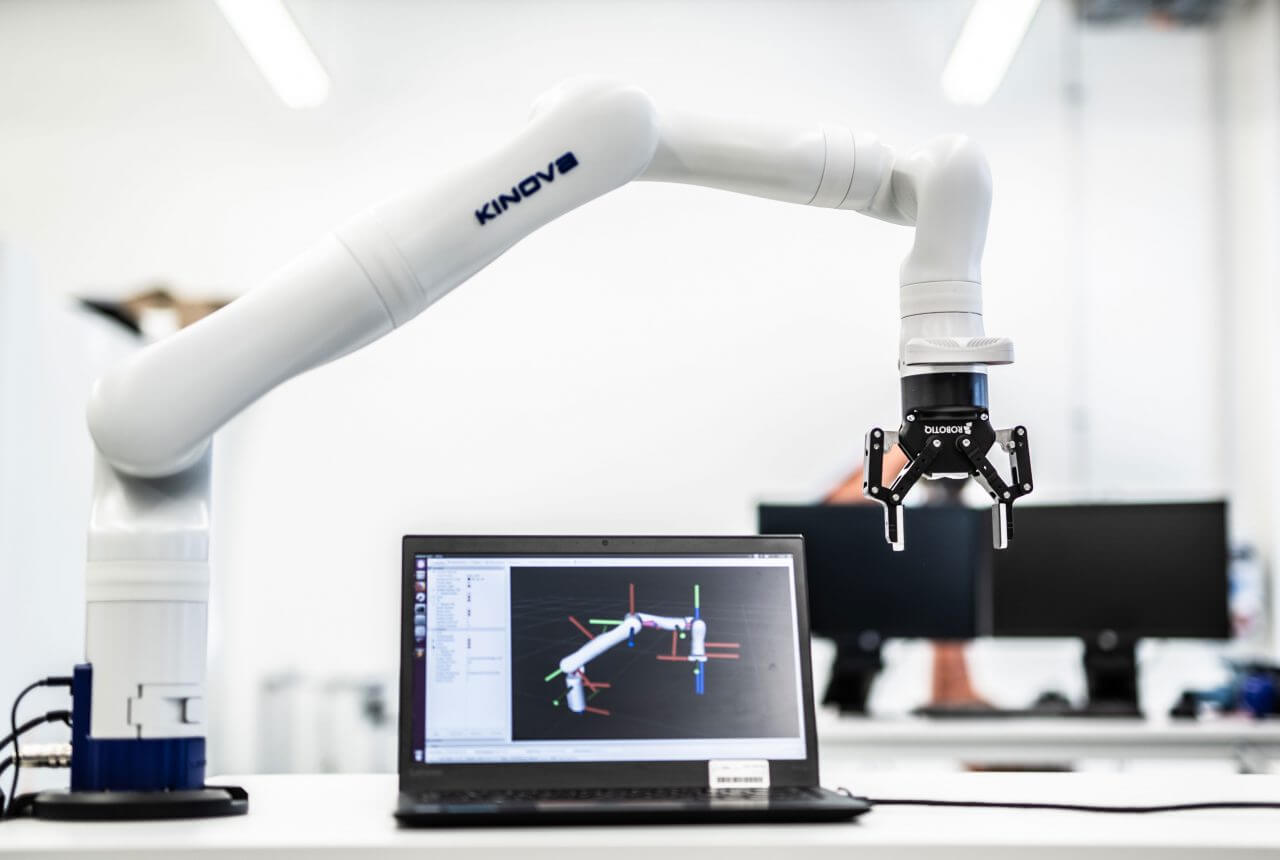It has always been a human endeavor to create a mechanical helper to make life easier. Technically, as various marketing videos would have us believe, anything is already possible – even bats and “dogs” that can open doors. So what about the technical clone that does the work for us? What’s the latest on the level of robotics in our everyday work? What are the latest trends in this area and most importantly – what about robotics in aviation?
ZAL is working on the future of aviation. Clearly, the question of robotics plays a major role. In the automotive industry, the mechanical helpers are almost indispensable. In aviation, however, this process has been slower due to the far more complex requirements of this industry. The robotics & automation team at ZAL GmbH is driving forward automation in aviation. Below you will find insights into the main research areas of our specialists.
Robot class: Automated featherweights
Automation using robot arms is also nothing new. General Motors began using robots in the automotive industry as early as 1962. Classically, man has always been at a distance from the robot. Massive safety fences usually ensure that manned workplaces and automated areas do not overlap. This does not however suit the requirements of the aviation industry. Here, conventional robot systems quickly reach their limits. The comparatively low unit levels, as well as the high variance and special nature of the components, justify the overwhelmingly high proportion of manual work in aircraft construction. These conditions demand automation solutions which can deliver both intelligence and flexibility at the same time.
The solution is collaborative lightweight robots. For example, due to their light weight, this type of robot can easily be hung in a fuselage or mounted on a mobile platform. The resulting opportunities for human-robot collaboration arise, among other things, from an additional internal sensor system, which turns the actively functioning systems into perceptive and reactive systems. This feature allows the construction of intelligent systems that perform activities side-by-side with human team members. The robotics group of ZAL R&T is involved in several research projects related to the development of new fields of application for these robot colleagues.
Autonomous watchdogs
In addition to the factors discussed above, i.e. to protect humans from robots, the ZAL is investigating applications from a completely different direction – robots that protect people. In aircraft construction, the transport of heavy loads is the order of the day. If, for example, an aircraft door is transported to the installation site with the help of an overhead crane, increased safety regulations apply; people should not be too near the suspended load. In this scenario, a mobile robot developed by the ZAL R&T team would oversee operations. The mobile robot would track the door at every turn, surveying its surroundings and monitoring the progress of the process. If, for example, a person approaches too close to the robotic crane, the robot sounds an alarm. It can give visual or audible warning signals or even stop the process.
The robot, bearing the seal “Made by ZAL R&T”, will be tested, presented and further developed in a ZAL hangar specially set up for a high-level research project of this magnitude and be equipped with a functional test environment, including a crane system.
Printing robot arms
3D printing and robots – both technologies are an integral part of the aviation industry. A combination of the two is currently the subject of research within the ZAL Robotics team. The limits of conventional 3D printing, due to space restrictions and range of movement, will be augmented by the increased range and flexibility of a robotic arm. The goal is to make possible 3D printing on surfaces of any shape, in (almost) unlimited assembly space.
This exotic combination has potential uses in applications and assemblies that are currently based on conventional manufacturing processes involving subsequent joins. There is also potential in repair applications or in additive manufacturing of load-bearing elements through load-oriented and topology-optimized printing. The challenges of this project, apart from the additional actuators and sensors required, are more than anything, the path planning of the robot arm, as well as achieving the optimum control synchronization of all components.
Clearly, robots perform certain tasks better than humans – especially in combination with other technologies such as 3D printing. However, even if they are more capable in some areas, such as the support and optimization of routine work, they won’t rob human beings of their jobs.
Further information on the Robotics & Automation team at ZAL RnT can be found here [download id=”2109″]





